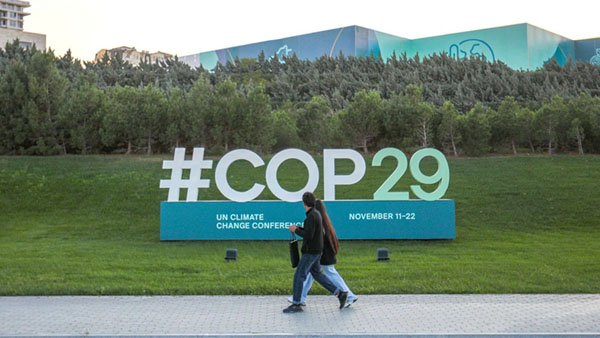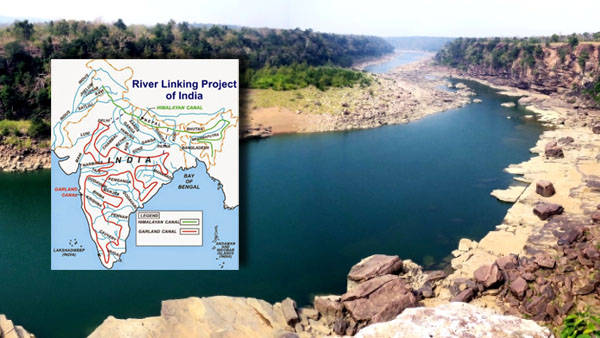By Joya Saikia
The 29th United Nations Climate Change Conference (COP29), held under unprecedented global tensions, underscored the pressing need for climate finance, particularly for developing nations. While the conference made notable strides in securing a financial commitment—the Baku Climate Unity Pact, where developed nations pledged to deliver $300 billion annually in climate funding to poorer nations by 2035—the financial gap remains vast. This pledge, while tripling the target set in 2009 and eventually achieved in 2022, falls far short of the $1.3 trillion annually estimated to be required by developing countries over the coming years. Although this agreement marks a step forward, it is crucial to acknowledge that it is merely the beginning of what must be a larger, more sustained effort.
However, the issue of insufficient financing is just one part of the story. As world leaders congregated in Baku, the deeper struggle that surfaced was not merely about funds—it was about the future of climate finance and, crucially, the role of women in this future. The impact of climate change on women and girls is stark and undeniable: they are 14 times more likely to perish in climate-related disasters than men, and make up 80 percent of those displaced by extreme weather events. These statistics are not random occurrences but reflect entrenched systemic inequalities, which hinder women’s access to education, economic opportunities, and decision-making power. Despite this, the New Collective Quantified Goal on climate finance—a central agreement in Baku—includes only a single, passing reference to women and girls. This fleeting acknowledgment came in paragraph 26, which urges parties to extend the benefits of climate finance to vulnerable groups, including women and girls. Yet, this minimal mention does little to address the fundamental gender inequalities that need to be tackled for real, transformative climate action to take place.
At the heart of this issue lies a stark reality: for climate action to be both effective and equitable, gender disparities must be addressed head-on. The marginalization of women in climate policy forums is a reflection of broader societal inequalities. While COP29 was praised for being the most gender-balanced in terms of registrations, women still represented just 35 percent of delegates—an increase of only one percentage point from the previous year. Of the 78 world leaders who attended the conference, just eight were women, and only four of them took the stage to address gender-specific issues. These figures reflect a glaring underrepresentation that translates into less influence over decisions that shape the future of climate action and finance.
The inclusion of women in climate initiatives is not just a matter of justice; it is a matter of efficacy. Research has shown that climate initiatives explicitly involving women tend to yield better outcomes for entire communities. From sustainable agriculture to renewable energy deployment, women around the world are already spearheading some of the most innovative and effective climate solutions. The inclusion of women and girls, particularly from marginalized communities, can unlock more efficient pathways for decarbonization, adaptation, and resilience. However, the current allocation of climate finance tells a different story. For every $100 of global climate finance, only 20 cents go toward supporting women, and a staggeringly low 0.01 percent addresses both climate action and women’s rights. This underfunding reflects the persistent gap in recognizing the indispensable role of women in combating climate change.
Despite these setbacks, COP29 did not entirely fail in advancing gender-responsive climate action. The enhanced Lima Work Programme on Gender was extended for another decade, providing a platform for gender inclusion in climate decision-making. The final “Presidency Text on Gender and Climate Change” incorporated 27 gender-specific provisions, emphasizing the importance of women’s full, meaningful, and equal participation in climate action. Additionally, the “Gender Action Plan,” which countries agreed to develop and adopt at COP30, offers a framework for future progress. Yet, despite these commitments, COP29 fell short in addressing some critical intersectional issues, such as the links between gender equality, peacebuilding, and climate action. There were also no concrete steps toward closing gender gaps in skills development—particularly in STEM (science, technology, engineering, and mathematics)—which are essential for women to access green jobs and participate fully in the transition to a sustainable economy. Likewise, calls to include the care economy in climate action and to simplify access for grassroots women’s organizations and indigenous communities fell short in the final text. The lack of a structural push to ensure the implementation of gender-responsive climate finance at scale was also a missed opportunity.
Looking ahead to COP30, the international community must take bold steps to turn these promises into tangible actions. A key part of this effort will be the establishment of clear international guidelines for integrating gender considerations into climate finance. These guidelines must be backed by allocated budgets, measurable targets, and participatory approaches that ensure effective, transparent, and accountable climate finance. Tracking systems must be robust, monitoring not only the money pledged but also where it is being spent, who benefits, and whether it leads to real improvements in gender equality and climate resilience. Financing local initiatives, particularly in informal settlements where women often lead climate-resilience efforts, should be a priority.
However, it is crucial to recognize that the responsibility for closing the gender gap in climate action does not rest solely with international frameworks. National policy frameworks must also play a vital role. In India, for example, the UNFCCC’s latest analysis reveals that while 82 percent of countries mention gender in their nationally determined contributions (NDCs), fewer than 26 percent incorporate meaningful gender considerations in their long-term strategies and investments. As countries prepare their updated NDCs for submission in February and assessment at COP30 next year, they must ensure that gender-specific programs and policies are integrated into their climate strategies.
While the geopolitical landscape remains uncertain, and tensions are likely to persist, COP30 offers a unique opportunity to reflect on our collective priorities. If we are to successfully address the climate crisis, we must ensure that gender equality is aligned with the Paris Agreement and the Sustainable Development Goals. The climate crisis is not gender-neutral, and therefore, our solutions cannot be either. The exclusion of women from climate decision-making not only perpetuates cycles of vulnerability but also undermines the effectiveness of the climate solutions we need. Thirty years after the Beijing Declaration and Platform for Action placed gender equality firmly on the global agenda, it is time for another leap forward—for women’s rights to be at the heart of the fight against climate change.
COP29 highlighted the critical need for a gender-responsive approach to climate finance, but much work remains to be done. If COP30 is to mark a true turning point in the global climate response, it must deliver on its promises to empower women and ensure that climate finance is as inclusive as it is transformative. Without a consistent and focused effort to integrate gender into climate action, we risk further deepening inequalities, perpetuating cycles of vulnerability, and undermining the global response to the climate crisis. The time to act is now—because climate change, like gender inequality, does not wait.
(the writer can be reached at joyasaikia1990@gmail.com)




